Lee Mingwei is not a Buddhist.
On a sunny morning this past May, the Taiwanese artist was serving me tea in his bright, plant-filled loft in New York’s financial district. The tea was fragrant; the cups, delicate and pale green, were the work of a friend’s mother. We faced each other across a table, bare save for the tea tray and cups. The loft was uncluttered; classical music was playing softly in the background. Lee, a youthful 51-year-old with a warm smile and an easy manner, was dressed casually in a sarong and button-down shirt, at pains to put his visitor at ease. We seemed less interviewee and interviewer than host and guest. In fact, our meeting was in subtle alignment with Lee’s method of making art, which is to set up a physical or ritual situation and then let go and allow events to unfold.
Lee’s work—exhibited at the Whitney Museum of American Art, the Museum of Modern Art, and the Los Angeles County Museum of Art, among other institutions—falls into roughly two categories: environments where viewers can connect with one another, and more intimate, one-on-one interactions with the artist. He has told curator Eugenie Tsai, who presented his piece The Moving Garden (2009) at the Brooklyn Museum, that he tends to alternate between the two forms. The Moving Garden, in which visitors to the museum were encouraged to take a flower from a water-filled channel in a 45-foot-long granite table and give it to a stranger on their way home, belongs to the first category, while pieces like The Tourist Project (2002), in which strangers sign up to give the artist a private tour of their city, belong to the second. Though the outward form of his works is exchange, they are all, at their core, about relationship.
Lee’s method of making art is to set up a physical or ritual situation and then let go and allow events to unfold.
Prior to our meeting, Lee had emailed me suggesting that we try to conduct our interview without saying the word “Buddhist.” Unfortunately, I didn’t see the email, and so led with his experience summering at a Chan monastery between the ages of 6 and 12.
A doctor and a professor respectively, Lee’s father and mother were underground political activists. “We had plainclothes secret police [trying] to find out what my parents were thinking,” said Lee, “and my parents didn’t want the kids around.” One of his father’s patients was a well-known Chan Buddhist monk, and Lee’s father asked his son if he wanted to go spend summer vacation at the monastery.
“The interesting thing for me, looking back,” Lee recalled, “is that this man didn’t really teach me anything about Buddhist scripture, or philosophy, or thinking. Every morning we would wake up at 3:30 a.m. and clean the temple together and then just take very long walks in the bamboo forest. He taught me a lot about Chinese classical literature and painting. But although those six summers were spent in a Buddhist monastery, during the school year I went to Catholic school. So in many ways I’m probably a little more Catholic than Buddhist.”
At the age of 12, Lee was sent with a younger sister and cousin to live first in Santo Domingo and then in the United States—in part so that Lee could avoid conscription into the Taiwanese army. In Santo Domingo, “We had caretakers,” he told me, “and other Asian expat families who became like our families.” After moving to the United States, Lee attended a high school founded by Benedictine monks in Palo Alto, California. “The Benedictine brothers were mainly from Hungary,” he said, “and they had a very profound influence on me in terms of appreciating European classical literature and music. My inspiration is found in classical forms. It’s not found in contemporary art.”
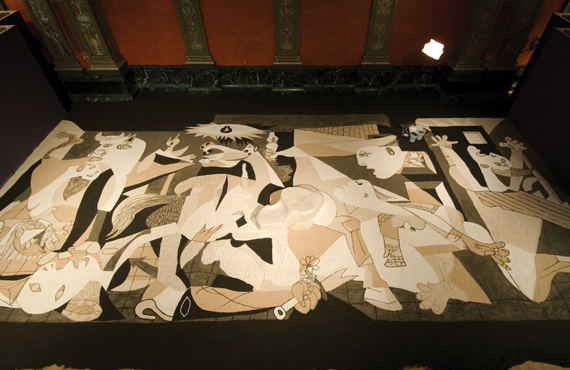
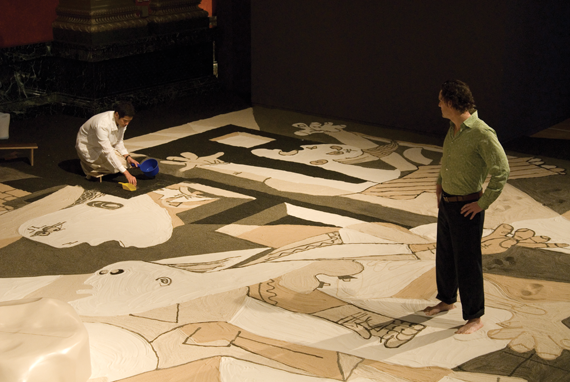

Having set aside this time to meet with me, Lee seemed completely present, relaxed, and engaged. But in truth, he was having a busy month. Sonic Blossom (2013), an interactive performance project in which a professional singer offers museum visitors the gift of song—one of five lieder by the Austrian composer Franz Schubert—had just closed at the Museum of Fine Arts in Boston to travel to the Metropolitan Museum of Art in New York, where it will be presented on October 30–31 and November 6–8. Lee was in the process of negotiating the terms of its sale to the Boston museum; his works sell to adventurous private collectors and public institutions, the purchaser acquiring any props for the piece and the right to recreate it.
A mid-career retrospective, which had originated in 2014 at the Mori Museum in Tokyo, was about to open at the Taipei Fine Arts Museum in just a few weeks. (It will travel to the Auckland Art Gallery in the spring of 2016.) The show, with its exemplary catalog, represents the most thorough accounting to date of Lee’s particular brand of participatory art, which the curator of the exhibition, Kataoka Mami, describes in her introductory essay as finding “its completion through ‘participation’ at many levels, and in accordance with the instructions attached to each work.”
It had been 18 years since I’d last seen the artist. That early encounter was at his first show in New York in 1997, an exhibition held at Lombard Freid Gallery that consisted of visual documentation of two artworks and the live staging of a third. For the first artwork, Money for Art (1994), Lee had sat in a café, making origami sculptures out of ten-dollar bills. He gave these out to inquisitive onlookers on the condition that he could check in with the recipient every six months to see what they had done with their sculpture. Most had spent the money and dutifully photographed what they had purchased with it. Several, however, had kept the bills, including a homeless man named John, who still had his some 20 years later. Also documented was100 Days with Lily (1995), in which the artist commemorated his grandmother’s death by carrying a narcissus plant around with him every waking moment for 100 days—eating, sleeping, and bathing with it. The new participatory project, performed for the duration of the show, was The Dining Project (1997): each night, Lee would cook dinner in the gallery for one person chosen by lottery from a list of interested gallery visitors.
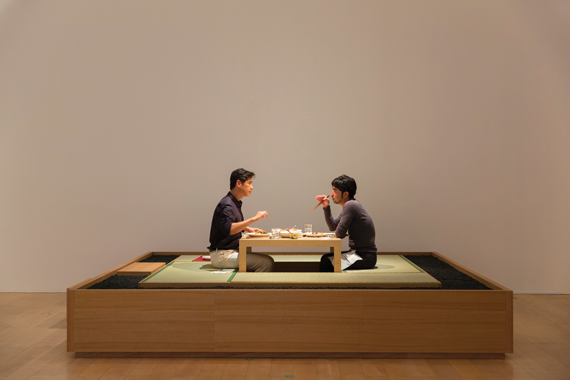
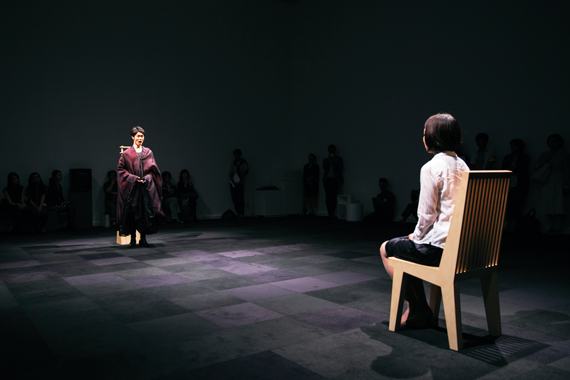
The show at Lombard Freid coincided with a revival of participatory art led by such young international artists as Angela Bulloch, Pierre Huyghe, Philippe Parreno, and Rirkrit Tiravanija. Only a year earlier, the seminal 1996 exhibition Traffic, curated by Nicolas Bourriaud at CAPC musée d’art contemporain de Bordeaux, France, had brought these artists to greater attention and given a name to the kind of work they were making: relational aesthetics. “The possibility of a relational art (an art taking as its theoretical horizon the realm of human interactions and its social context, rather than the assertion of an independent and private symbolic space),” Bourriaud wrote, “points to a radical upheaval of the aesthetic, cultural, and political goals introduced by modern art.”
Lee’s work is not usually associated with the relational aesthetics movement. Nevertheless, like the interactive art of artists like Tiravanija—best known for early performances in which he made Thai curry for visitors to his exhibition—it is part of a strain of art-making, running from Dada through the Happenings of the 1960s and right up to the social practice art of today, that questions the role of the artist and the place of art in contemporary society.
Lee’s own introduction to this lineage was at California College of the Arts (at that time, California College of Arts and Crafts, or CCAC), where he studied in the early ’90s with Suzanne Lacy, a performance artist and pioneer of socially engaged art. Lacy had been a student of Allen Kaprow, who is credited with inventing the Happening.
Lee arrived at CCAC after studying biology for four years at the University of Washington. At CCAC, he studied architecture and textiles and then went to work for a textile company. After two years, however, he realized that he needed to do something else. He contacted Lacy and installation artist Mark Thompson, his mentors at CCAC, and told them he wanted to pursue a graduate degree in fine art. All he had to apply with, however, were “these images of woven textiles that looked like doormats and table runners,” said Lee. “Suzanne told me, ‘Go home and give yourself a month. Do three projects. Look back over your life for things that are meaningful to you and use them as your source.’ So I did. And when I came back with these three projects, she said, ‘OK, you’re ready to go.’”
Those three projects (which included Money for Art and 100 Days with Lily) got Lee into Yale. Lacy had provided him with a telephone number for Allen Kaprow, Lee remembers. “I called, hoping he wouldn’t pick up the phone. But he did. I said, ‘I’m a student of Suzanne Lacy’s and I just wanted to say hello, and I’m a conception artist’—that’s what I said instead of conceptual artist—and he laughed and said, ‘I hope you’re having fun!’ And from that point on our conversation was just so beautiful. It gave me confidence. He was my teacher’s teacher, and for an Asian that’s the idea of sensei. Sensei is bigger than God.”
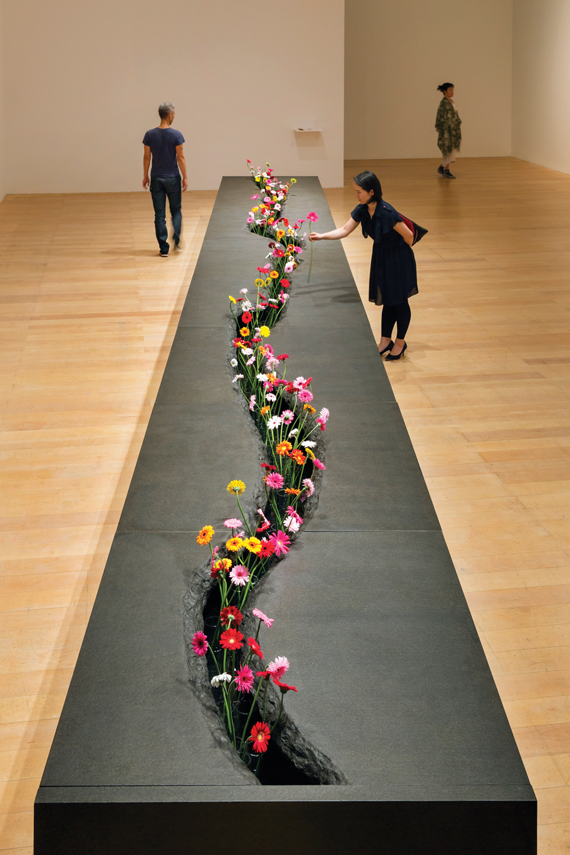
Lee’s third project for Lacy and Thompson consisted of hand-sewing three traditional Japanese garments called hakama and sending them anonymously to three artists he admired. Although he won’t name them, Lee told me that they are all classical artists—one Japanese, one Korean, one Taiwanese. “One is a musician, one is a poet, and one is a classical dancer,” he added. “I don’t even know if they received them.” As he sewed, Lee recited the Heart Sutra in Chinese.
“Reading Allen Kaprow on the blurring of art and life had a big influence on me. If brushing your teeth could be art, I thought, then maybe sewing a gift with sincerity and prayer could be art too.”
While relational aesthetics has, almost from the beginning, been accused of insularity—an art form that catered to a small, elite crowd of art world participants—Lee’s projects are notable for their involvement of individuals drafted from everyday life, usually through ads or sign-up sheets in galleries, as well as for their unusual degree of intimacy. In fact, when Lee was undertaking an early form of The Dining Project at Yale in 1995 (“I was lonely, so I put flyers around the campus inviting people to dinner and spent the whole year cooking for strangers”), a perspicacious faculty member invited Tiravanija to be a guest lecturer there for a semester. Lee recalls Tiravanija commenting on the difference between their methodologies, characterizing Lee’s work—which involved cooking for only one person in a private setting instead of for a crowd—as more “extroverted” than his own.
Related to this intimacy is the need for structure. All of Lee’s performance pieces have rules of engagement, but they often have a physical form as well—the table built for The Dining Project, for example—that more subtly dictates the work’s parameters. “I think that comes from my architectural training,” Lee explained. “Let’s call it my furniture.” The Sleeping Project (2000)—a nonsexual sleepover in which the artist and a participant chosen by lottery spend the night in adjacent beds—would be a “completely different piece” if Lee, in his words, had accented his hand-built couches with leopard-print coverlets or red velvet pillows.
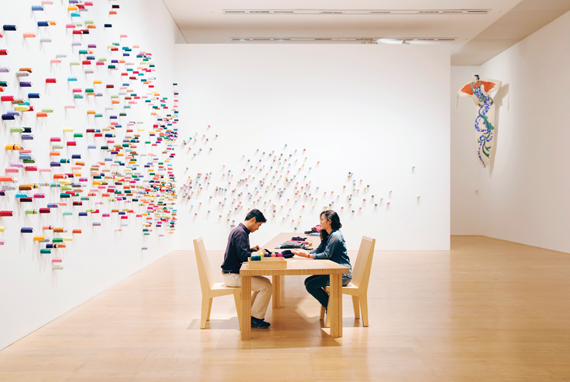
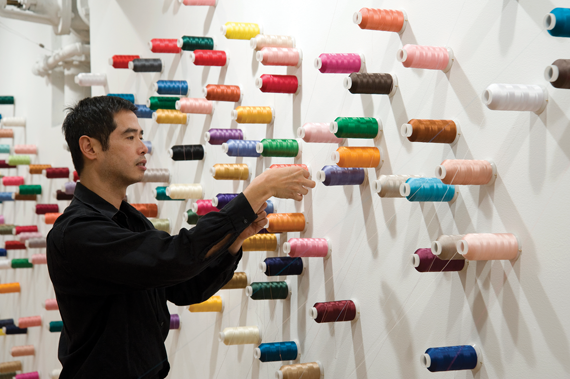
Buddhist iconography often adorns Lee’s works. Guernica in Sand (2006), for example, while based on a Western masterpiece (one that made an impression on Lee as a child when he saw it in New York), is swept away at the end of the show like a Tibetan sand painting. “After presenting the work,” the artist recalled, “we had a symposium, and one of the most impressive speakers was a Zen scholar from Tokyo University. What was very revealing for me was when he said that after the piece was destroyed, for him the original Guernica image was still in there. It was just that our relationship to each grain of sand and the relationship of each grain of sand to the other grains of sand had changed.” Another installation, The Mending Project (2009), conjures the idea of dependent arising with a growing web of threads stretching from spools mounted on the wall to a table, where for the duration of the piece Lee mended any clothes that people brought him. At the end of the show, the threads were cut and the mended articles were returned to their owners.
A familiarity with both Eastern and Western contemplative and artistic traditions may account for the cosmopolitan flavor of Lee’s relational art. Indeed, in her survey of his work, Kataoka has chosen to include not only pieces by such artists as Kaprow and Tiravanija but works by the Zen master Hakuin as well, reflecting her longstanding interest in the parallels between Buddhist thought and relational aesthetics. In an early essay, Kataoka has noted that “the potential of the relational art Bourriaud describes, in focusing on mutual human relationality, and in referencing an upheaval of modern values, is indeed some- what close to the [Buddhist] concept of ‘connectedness.’”
As Kataoka notes in her catalog essay for the Mori show, the social and cultural background surrounding the development of participatory art in Asia—or, as in Lee’s case, its production by Asian artists living elsewhere—demands a viewpoint broader than that offered by most Western critics. One component of this viewpoint may be the avoidance of labels; when asked how viewers should regard his work in relationship to Buddhism, Lee answered, “I’d invite them to put aside the Buddhist component. Later on, if they want to put that gloss back on, they are welcome to. But initially, put it aside and just look at the work.”